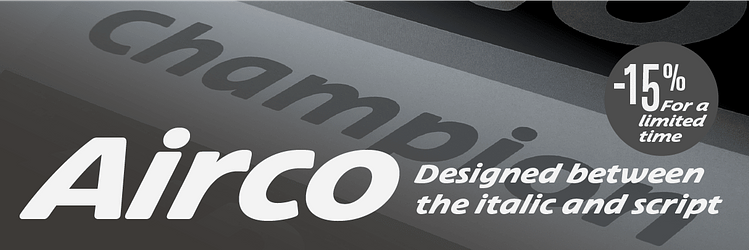Apolline
About
A Venetian serif in 10 fonts & ornaments
It is a low-contrast text typeface, which follows the characteristics of Renaissance typefaces. By the dynamics of its structure, the proportions of capitals as well as minuscules, the Apolline will bring style to your compositions, while remaining extremely pleasant to read. In display sizes, the subtleties of the drawing, such as the shape of the drops, asymmetric serifs are visible and offer a special stamp to your titles and use in visual identity, packaging, etc.
Apolline typeface family was created by Jean François Porchez as a means to study the transition from Renaissance writing into the first printing types. Rather than sticking to the method commonly used these days for the design of revivals of Jenson or Bembo types, it seemed more interesting to try and get in the same mindset as those exceptional designers during this pivotal period in the history of typography. Thus Apolline is an exploration of the design methods used by punchcutteurs as Nicolas Jenson and his contemporaries for adapting handwriting with its multiple occurrences (a, a, a, b, b, b…) into single, unique glyph (a, b…).
Initially Jean François made drawings modelled after his own calligraphy. They were done at a very small size on tracing paper (2 cm high for the capitals) to preserve the irregularity of human handwriting. Besides emphasising the horizontal parts of the letter forms, the serifs were designed asymmetrically to reinforce the rhythm of the writing. The final drawings were produced at a large size (10 cm high for the capitals) to allow for subtle optimisation of specific details.
The very narrow and fluid Apolline italic
Influenced by various concepts for an ideal italic by Van Krimpen, Gill, etc. Apolline italic was designed at 8° degrees. Although the structure of the letterforms were informed by chancery scripts, the italic has full serifs like the roman. Very narrow and fluid, its unique design creates a good contrast when used in combination with its upright counterparts. Thanks to the presence of the serifs similar to roman typefaces it sets very neatly in large sizes.
The next step was digitising the drawings with Ikarus (the pre-Bézier-curves era) to create the final roman and italic fonts. Two years later, when the family was expanded to six series the same method was used, this time with Fontographer. This was necessary for correcting a few problems caused by the conversion to Bézier outlines, and to add intermediate weights. Before the advent of feature-rich OpenType, quality type families consisted of several separate fonts for each weight to provide users with various sets of numerals, an extended ligature set and alternates, ornaments, and so on.
Built on an impressively large glyph set covering most of languages using Latin script, Apolline has final glyphs and alternates accessible through OpenType features. Small caps are now included in all the weights. A new additional book weight was created specifically to be used in combination with the regular to maintain a consistent typographic grey value down to the smallest type sizes.












